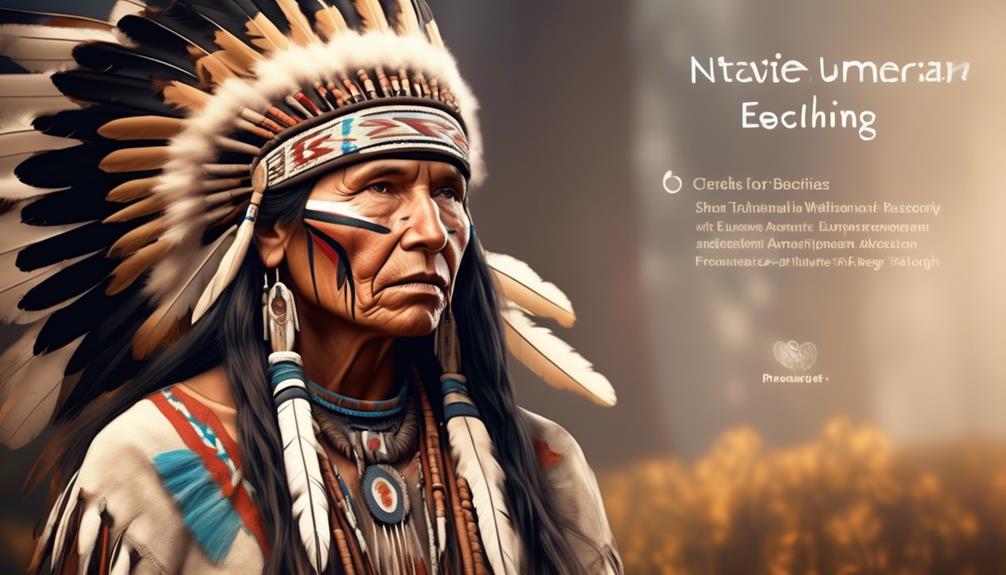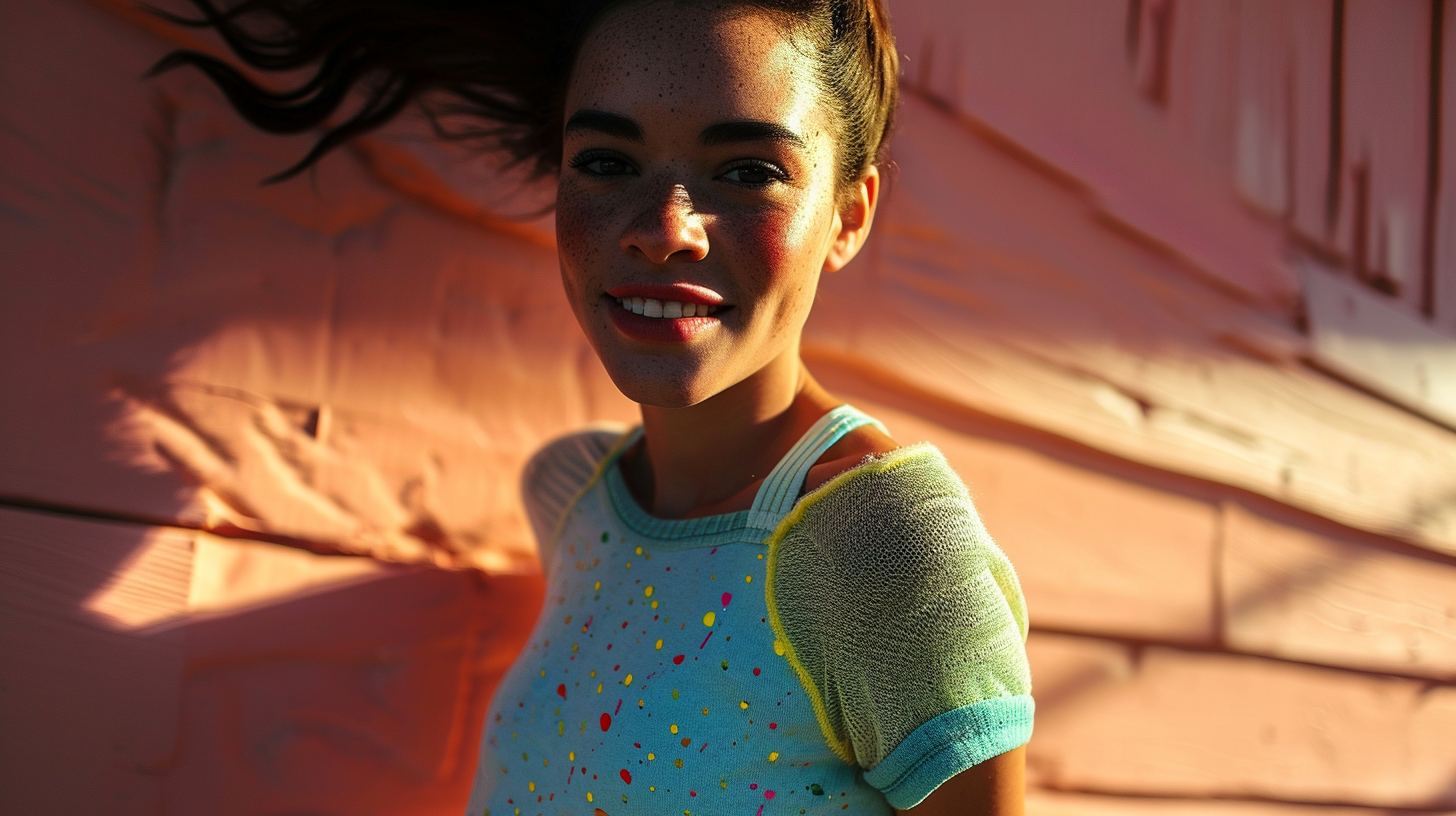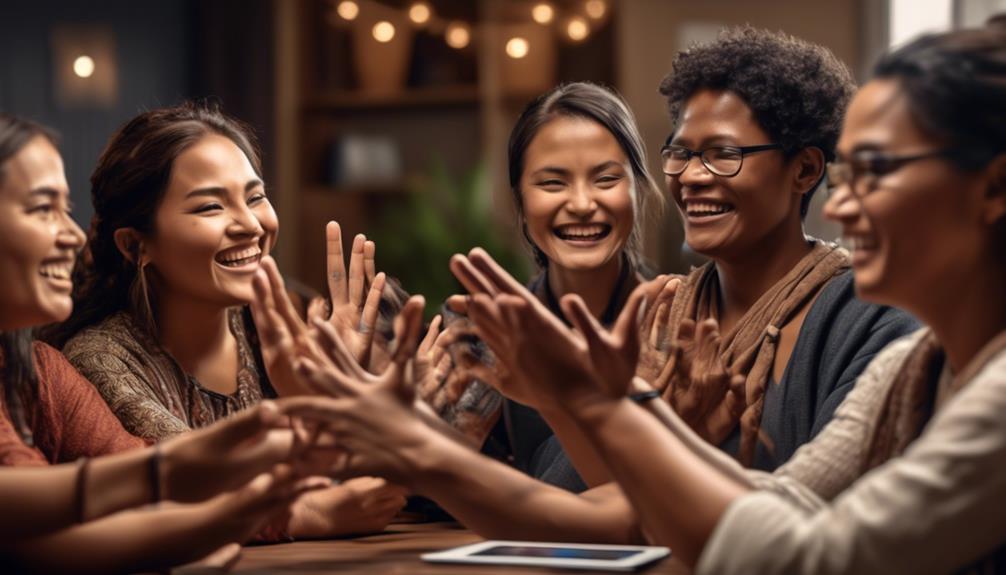As we navigate through the intricate history, it is evident that the interaction between European settlers and Native American tribes was a double-edged sword. Despite the inclination to focus on the negative impacts, it is crucial to acknowledge the positive results that arose from this cultural fusion.
The exchange of agricultural practices, introduction of new technologies, and influence on artistic traditions are just the tip of the iceberg when it comes to the ways in which European contact reshaped the Native American way of life.
But what were these impacts, and how did they shape the trajectory of both the indigenous and the colonizers?
Key Takeaways
- Introduction of new crops and farming techniques, leading to improved agricultural systems and increased productivity for both Europeans and Native Americans
- Enrichment and revitalization of indigenous artistic traditions through the fusion of traditional and European artistic styles, introduction of new materials, and development of innovative art forms
- Evolution of social structures and tribal governance, including the adoption of European governance systems, formation of new trade relationships and alliances, and preservation of indigenous knowledge and practices
- Adoption of new crops and advancements in medicine, resulting in crop diversity, economic impact, dietary changes, and improved healthcare practices through the integration of diverse medical traditions and sharing of medical knowledge
Exchange of Agricultural Practices
Frequently, the exchange of agricultural practices between Europeans and Native Americans resulted in the introduction of new crops and farming techniques to both groups. This agricultural exchange had a significant impact on the crop cultivation methods of both the Europeans and the Native Americans.
The Native Americans introduced Europeans to crops such as maize, potatoes, and tobacco, which had a profound effect on European agriculture and diet. In return, the Europeans brought crops such as wheat and barley to the Americas, which transformed the agricultural landscape for the Native Americans.
The exchange of agricultural practices also led to the sharing of farming techniques. Native American methods such as crop rotation and the use of natural fertilizers greatly influenced European farming practices. These techniques enhanced soil fertility and crop yields for the Europeans.
Conversely, European methods of animal husbandry and plowing were introduced to the Native Americans, revolutionizing their agricultural productivity.
This exchange of agricultural practices fostered a mutual learning experience, resulting in the diversification of crops and the improvement of farming methods for both groups. It allowed for the development of more resilient agricultural systems, which ultimately contributed to the liberation of both the Europeans and the Native Americans from food scarcity and insecurity.
Introduction of New Technologies
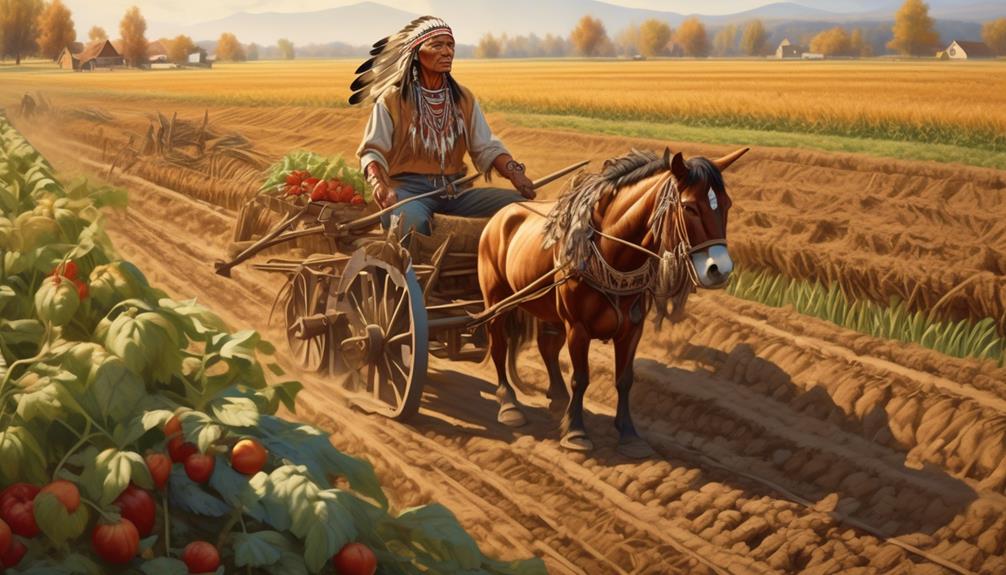
The introduction of new technologies significantly impacted the interactions between Europeans and Native Americans, shaping their societies and economies in profound ways.
- Technological Advancements:
The arrival of Europeans brought with it a wave of technological advancements previously unknown to Native American societies. These advancements included the introduction of firearms, metal tools, and new methods of transportation such as horses. These technologies not only transformed the way of life for Native Americans but also influenced their hunting and warfare techniques, leading to significant cultural and societal shifts.
- Cultural Innovation:
The exchange of new technologies also sparked cultural innovation among Native American communities. The adoption and adaptation of European technologies led to the emergence of new artistic techniques, trade practices, and agricultural methods. This cultural exchange between the two groups resulted in the diversification and enrichment of Native American traditions, as they incorporated new tools and practices into their existing cultural frameworks.
- Economic Transformation:
The introduction of new technologies by Europeans played a pivotal role in the economic transformation of Native American societies. The access to advanced tools and weapons enabled Native Americans to enhance their productivity in various economic activities such as agriculture, trade, and craftsmanship. This economic shift not only improved their quality of life but also contributed to the development of complex trade networks and economic systems within their communities.
Influence on Artistic Traditions
The influence of Europeans on Native American artistic traditions brought about a significant exchange of artistic techniques and styles.
The introduction of new materials such as metal tools and dyes expanded the creative possibilities for Native American artists.
As a result, a fusion of traditional and European artistic styles emerged, leading to the development of unique and innovative art forms.
Artistic Exchange Impact
Through the exchange of artistic techniques and cultural influences, European interaction with Native Americans significantly impacted the evolution and diversification of artistic traditions among indigenous communities.
The artistic innovation brought by European settlers sparked a creative collaboration that led to a transformation in visual expression within Native American art. This exchange of ideas and techniques allowed for the merging of traditional indigenous art forms with new European styles, leading to the emergence of unique artistic expressions.
The fusion of diverse artistic elements resulted in the development of hybrid art forms that reflected the interconnectedness of different cultures. This exchange not only enriched the artistic traditions of Native Americans but also contributed to the preservation and revitalization of indigenous art in the face of cultural changes.
New Materials Introduced
Introduction of new materials into Native American artistic traditions led to a transformation in the methods and styles of artistic expression. The material impact of European influence resulted in the introduction of innovative materials such as metal tools, glass beads, and colorful dyes that were previously unavailable to Native American artisans.
This led to a cultural exchange and artistic fusion, as these new materials were incorporated into traditional artistic practices, giving rise to new forms of expression and creativity. The introduction of these materials not only expanded the artistic repertoire but also facilitated the development of new techniques and styles, blending traditional Native American artistic traditions with European influences.
This infusion of new materials brought about a period of innovation and creativity, enriching the artistic heritage of Native American communities.
Fusion of Styles
With the infusion of new materials into Native American artistic traditions, the fusion of styles and influences brought about a period of innovation and creativity, shaping the artistic heritage of Native American communities.
This fusion of styles not only impacted visual arts but also led to a blending of music styles and fusion of cuisines, resulting in a rich tapestry of cultural expression.
The incorporation of European techniques and materials into traditional Native American art forms sparked a renaissance of creativity, leading to the development of new artistic styles and forms.
The blending of music styles allowed for the creation of unique and diverse musical expressions that reflected the merging of different cultural influences.
Similarly, the fusion of cuisines resulted in the development of new dishes that combined traditional Native American ingredients with European cooking techniques.
Impact on Cultural Exchange
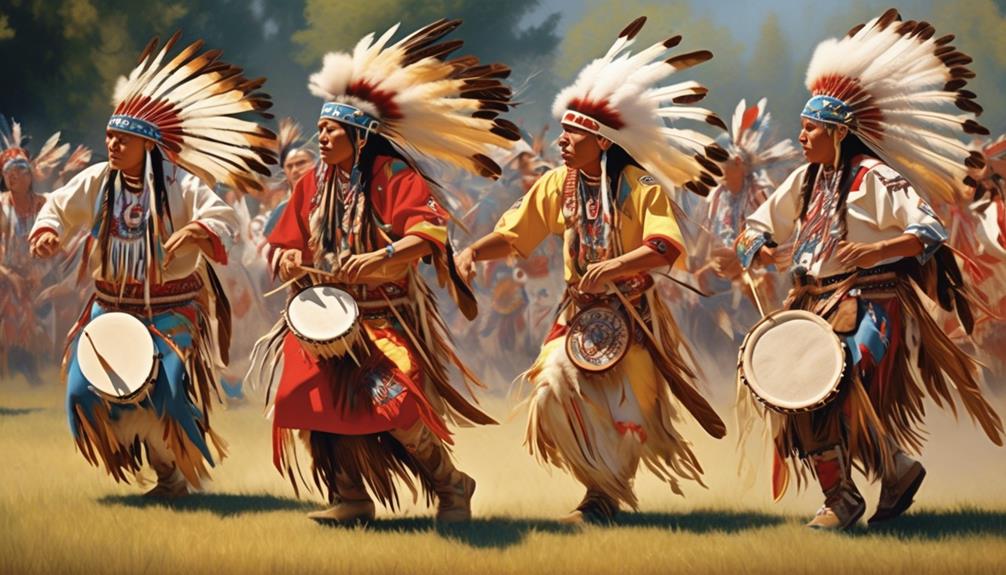
The cultural exchange between Europeans and Native Americans led to the sharing of knowledge, traditions, and practices that significantly impacted both societies. This exchange resulted in a complex process of cultural assimilation, where both groups integrated elements of each other's cultural identity into their own. The impact on traditional practices and cultural heritage was profound, as it brought about a blending of customs and rituals that shaped the identities of both Europeans and Native Americans.
The exchange of agricultural techniques was one of the most significant aspects of the cultural exchange. Native Americans introduced Europeans to crops such as maize, potatoes, and various beans, which had a transformative effect on European agriculture and diet. In return, Europeans introduced new farming methods and livestock to the Native Americans, altering their traditional agricultural practices. This exchange not only impacted the food habits of both groups but also influenced their respective cultural identities and social structures.
Furthermore, the sharing of artistic techniques and styles led to the development of new forms of artistic expression. Native American art, with its focus on nature and spirituality, influenced European art, leading to a fusion of styles that enriched the cultural heritage of both groups. The exchange of music, dance, and storytelling also played a crucial role in shaping the cultural identities of Europeans and Native Americans, creating a shared legacy that continues to resonate today.
Changes in Social Structures
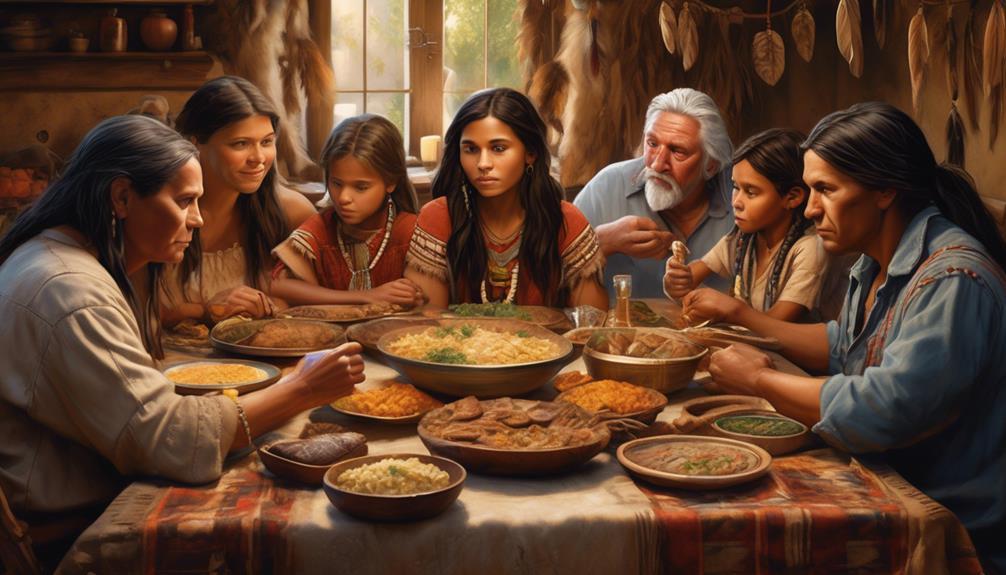
As we explore the positive impacts of Europeans on Native Americans, it's crucial to consider the changes in social structures.
The evolution of tribal governance and the adaptation of kinship networks are significant aspects to analyze in this context.
These changes reflect the dynamic nature of Native American societies in response to the interactions with European settlers.
Tribal Governance Evolution
Through interactions with European settlers, Native American tribal governance underwent significant evolution, resulting in changes to their social structures. This transformation was influenced by various factors, including the introduction of European forms of governance, the impact of trade and alliances, and the implementation of formal treaties.
- Adoption of European Governance Systems: Native American tribes began to incorporate elements of European governance structures, such as the establishment of tribal councils and the adoption of written laws and constitutions.
- Trade and Alliances: The interactions with European settlers led to the formation of new trade relationships and alliances between tribes, which necessitated the development of new governing mechanisms to manage these interactions.
- Formal Treaties: The negotiation and signing of formal treaties with European powers led to the restructuring of tribal leadership and governance structures to align with the terms of these agreements.
Kinship Network Adaptation
Upon encountering European settlers, Native American kinship networks underwent significant adaptation, resulting in profound changes to their social structures.
Kinship dynamics shifted as traditional roles and responsibilities were redefined. Adaptation strategies included forming new alliances, renegotiating inter-tribal relationships, and adjusting communal decision-making processes.
The traditional clan and family structures evolved to accommodate new economic and political realities imposed by European colonization. This adaptation fostered resilience and unity within Native American communities, as they navigated the challenges of cultural integration and external pressures.
The reconfiguration of kinship networks also led to the preservation of indigenous knowledge and practices, contributing to the endurance of Native American cultural identity.
Despite the disruptions caused by European contact, the adaptive nature of kinship networks allowed for the preservation of essential cultural values and social cohesion within Native American societies.
Adoption of New Crops
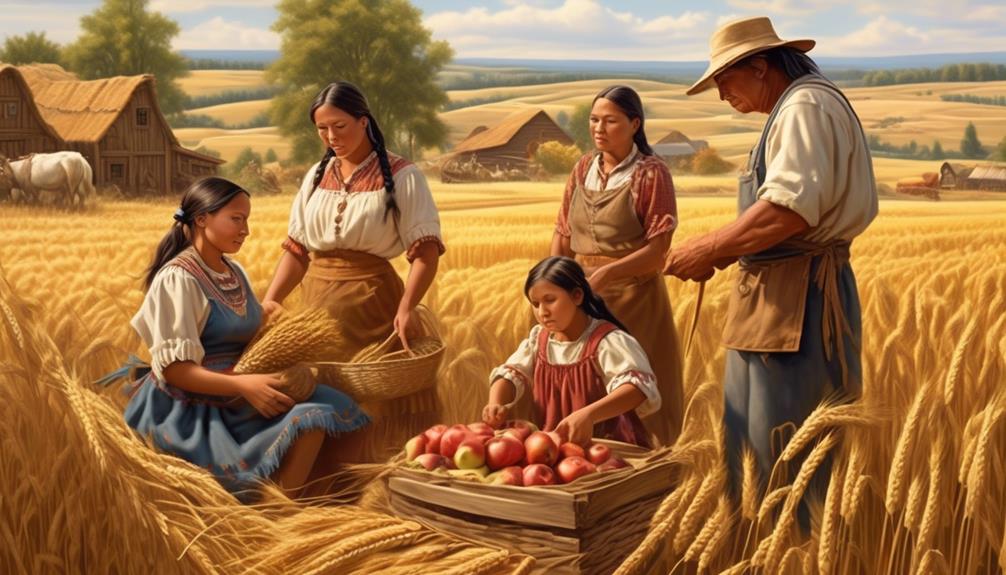
The introduction of new crops by Europeans significantly impacted the dietary and agricultural practices of Native American communities. This adoption of new crops brought about several changes that reshaped the way Native Americans cultivated and consumed food.
- Crop Diversity: The influx of European crops such as wheat, barley, and peaches diversified the agricultural landscape of Native American communities. This infusion of new crops not only expanded the variety of food available but also contributed to the enrichment of the soil through crop rotation, a technique introduced by the Europeans.
- Agricultural Techniques: The adoption of European crops necessitated the adaptation of new agricultural techniques. Native Americans learned and integrated European methods of farming, such as plowing and irrigation, into their traditional agricultural practices. This exchange of agricultural knowledge between the two cultures led to increased productivity and sustainability in food production.
- Economic Impact and Dietary Changes: The integration of European crops into Native American agriculture had far-reaching effects on their economy and dietary habits. The surplus of new crops created new opportunities for trade and commerce, strengthening the economic stability of the Native American communities. Additionally, the introduction of crops like wheat and barley altered the dietary patterns of Native Americans, leading to a more diverse and nutritionally rich diet.
The adoption of new crops from Europeans not only broadened the agricultural and dietary horizons of Native American communities but also fostered a cultural exchange that enriched their way of life.
Advancements in Medicine

We will examine the positive impacts of Europeans on Native Americans in the realm of medicine.
This includes the introduction of new plants with medicinal properties, the treatment for new diseases, and the sharing of medical knowledge.
Through this exploration, we'll gain a deeper understanding of the advancements in medicine that benefited Native American communities.
Introduction of New Plants
The introduction of new plants by Europeans significantly advanced the field of medicine among Native Americans, revolutionizing their approach to healthcare and healing practices. This horticultural integration and plant introduction brought about crop diversification, agricultural improvement, and a broader range of medicinal resources for indigenous communities.
The European introduction of plants such as wheat, barley, and rye not only diversified Native American agriculture but also provided new sources of nutrition and medicine. Additionally, the exchange of knowledge about medicinal plants between Europeans and Native Americans led to an expanded understanding of herbal remedies and their applications.
This exchange enhanced the medical practices of Native Americans, contributing to their holistic approach to healthcare and the treatment of various ailments.
Treatment for New Diseases
Introduction of new plants by Europeans significantly transformed Native American healthcare, leading to advancements in medicine and the treatment of new diseases.
The introduction of European crops such as wheat, barley, and rye provided Native Americans with a more diverse and nutritious diet, which improved their overall health and strengthened their immune systems.
Additionally, European settlers brought new medical knowledge and practices that contributed to disease prevention and treatment among Native American populations.
Through the exchange of medical knowledge and practices, Native Americans gained insights into new methods of disease prevention and witnessed medical advancements that positively impacted their communities.
The integration of these new approaches into traditional healing methods allowed for a more comprehensive approach to healthcare, ultimately enhancing the overall well-being of Native American tribes.
Sharing of Medical Knowledge
How did the sharing of medical knowledge between Europeans and Native Americans contribute to advancements in medicine and healthcare practices?
The cultural exchange between Europeans and Native Americans led to significant medical advancements and had a profound impact on healthcare practices by integrating traditional knowledge with new techniques.
- Medical Advancements: The exchange of medical knowledge resulted in the introduction of new treatments, surgical techniques, and medicinal plants, contributing to the advancement of medical practices in both communities.
- Cultural Exchange: The mutual sharing of medical knowledge fostered a deeper understanding of different healing practices and encouraged the integration of diverse medical traditions.
- Impact on Healthcare: This exchange positively influenced healthcare practices, leading to an enriched understanding of various illnesses and improved methods for diagnosis and treatment.
This sharing of medical knowledge laid the foundation for the modern healthcare practices that we benefit from today.
Transformation of Trade Networks
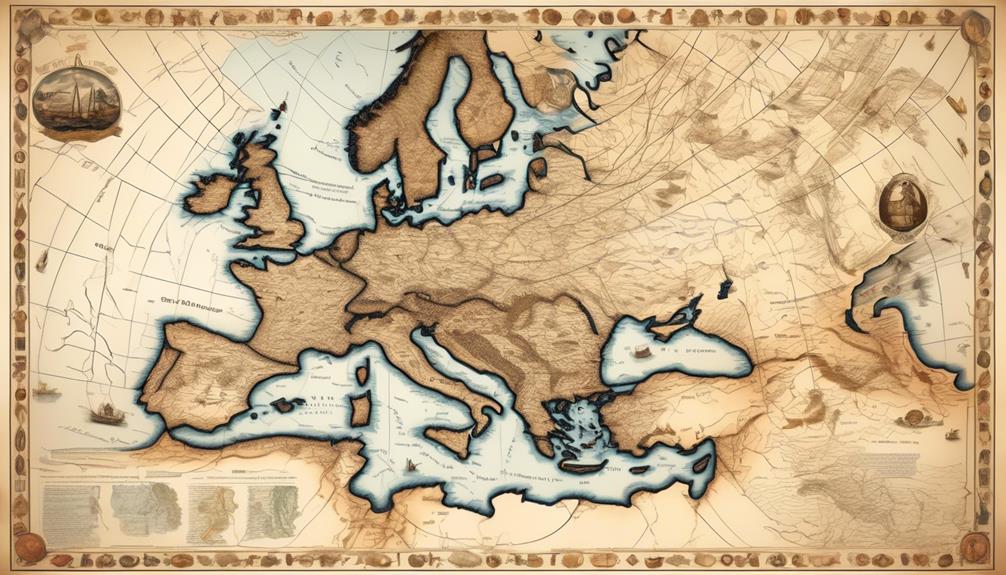
European colonization significantly restructured the trade networks of Native American tribes, leading to new patterns of exchange and economic relationships. The transformation of trade networks was a result of cultural diffusion, as European goods and products entered Native American markets, altering the dynamics of trade. The introduction of European trade goods such as metal tools, firearms, and cloth significantly impacted the indigenous economies, leading to the gradual decline of traditional trading patterns and the emergence of new inter-tribal and transatlantic trade networks.
The integration of European goods into existing trade networks led to the diversification of indigenous economies. Tribes adapted to the new trade opportunities by specializing in the production of goods that catered to the demands of the European market. This shift stimulated economic growth and fostered inter-tribal cooperation as communities engaged in long-distance trade to access European goods. Additionally, the fur trade became a pivotal aspect of the transformed trade networks, with Native American trappers supplying furs to European traders in exchange for valuable commodities.
Furthermore, the transformation of trade networks facilitated cultural exchange and interaction between Native American tribes and European settlers. The exchange of goods and ideas contributed to the enrichment of indigenous cultures and the establishment of new social and economic ties. While the restructuring of trade networks had complex implications for Native American communities, it undeniably brought about a period of economic adaptation and diversification.
Preservation of Oral Traditions
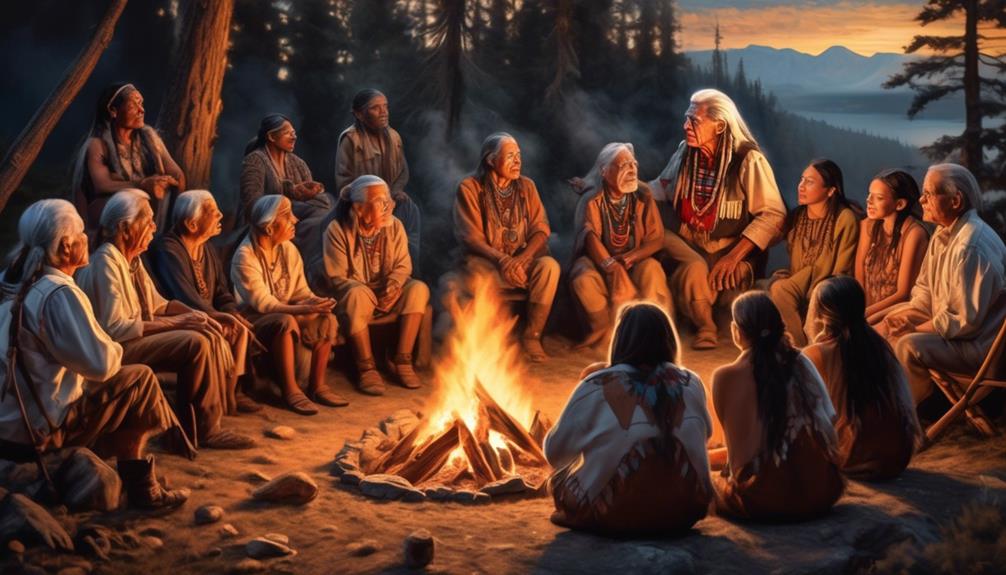
We observe a continuation of strong storytelling traditions among Native American communities, which has played a crucial role in preserving cultural knowledge and historical narratives.
The oral traditions passed down through generations have allowed for the retention of valuable information about traditions, rituals, and societal norms.
This preservation of oral traditions has provided insight into the history and beliefs of Native American tribes, contributing to a deeper understanding of their cultural heritage.
Storytelling Continues Strong
The preservation of oral traditions among Native American communities is evidenced by the enduring strength of storytelling practices. Despite the historical challenges posed by European colonization, storytelling continues to be a vibrant and integral part of Native American cultures. This resilience reflects a deep commitment to cultural preservation and a testament to the storytelling evolution that has occurred over time.
The significance of storytelling in Native American communities goes beyond mere entertainment; it serves as a means of passing down ancestral knowledge, preserving language, and reinforcing communal bonds. The continued practice of storytelling not only honors the traditions of the past but also adapts to the changing dynamics of the present, ensuring that the rich tapestry of Native American narratives remains an essential aspect of their heritage.
This preservation of oral traditions is achieved through several key mechanisms. First, storytelling serves as a transmission of ancestral knowledge. Through stories, Native American communities pass down wisdom, teachings, and historical events from one generation to the next. This ensures that important cultural and historical information is preserved and shared within the community.
Second, storytelling plays a crucial role in the preservation of native languages. Many Native American languages are endangered or at risk of extinction. By incorporating native languages into storytelling, communities actively work to revitalize and preserve their linguistic heritage. Storytelling provides a platform for language immersion, allowing younger generations to learn and engage with their ancestral languages.
Lastly, storytelling strengthens communal bonds within Native American communities. It fosters a sense of connection and belonging, as community members come together to listen, learn, and share stories. These gatherings cultivate a shared cultural identity and create a space for intergenerational relationships to flourish.
Cultural Knowledge Preserved
Despite the challenges posed by European colonization, the preservation of oral traditions among Native American communities remains a vibrant and integral aspect of their cultures, demonstrating a deep commitment to cultural heritage and knowledge transmission.
The preservation of oral traditions serves as a testament to the resilience and determination of Native American communities to safeguard their cultural knowledge despite the disruptive forces of European colonization.
Through cultural exchange, Native American communities haven't only preserved their own oral traditions but have also embraced opportunities to share and exchange cultural knowledge with diverse groups, fostering a deeper understanding and appreciation of their heritage.
This preservation of oral traditions not only enriches the cultural tapestry of Native American communities but also contributes to the broader tapestry of human cultural diversity, highlighting the enduring significance of oral traditions in the face of historical challenges.
Influence on Language and Communication
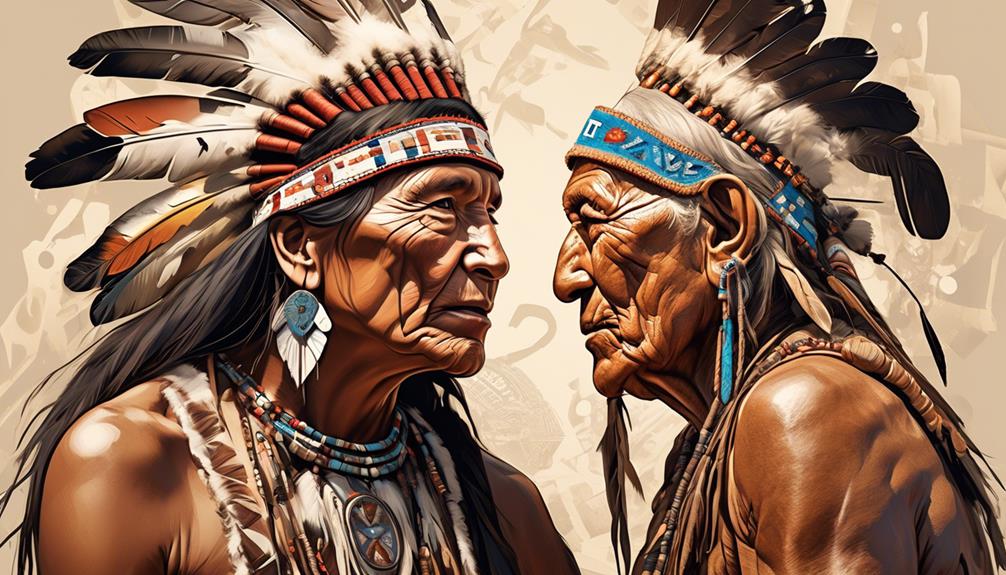
Through trade, interactions, and intermarriage, Europeans significantly impacted the language and communication of Native American tribes. This influence led to a complex evolution of Native American languages and communication methods, shaping their interactions with both Europeans and other tribes.
- Language Evolution: The introduction of European languages, such as English, Spanish, and French, into Native American communities resulted in a linguistic fusion that produced new dialects and even creole languages. This linguistic exchange enriched the Native American languages with new vocabulary and expressions, reflecting the interconnectedness of cultures.
- Communication Impact: The introduction of reading and writing systems by European missionaries and settlers played a crucial role in documenting and preserving Native American languages. This facilitated the transmission of oral traditions and cultural knowledge, contributing to the preservation of Native American heritage.
- Cultural Exchange: The exchange of linguistic and communicative practices between European and Native American communities fostered an environment of cultural exchange. This interaction allowed for the sharing of knowledge, beliefs, and worldviews, ultimately enriching both societies.
The European influence on Native American language and communication, while complex and multifaceted, contributed to the preservation and evolution of Native American cultures. The cultural exchange prompted by linguistic interactions not only enriched the linguistic landscape but also facilitated a deeper understanding and appreciation of each other's heritage.
Adoption of New Forms of Transportation
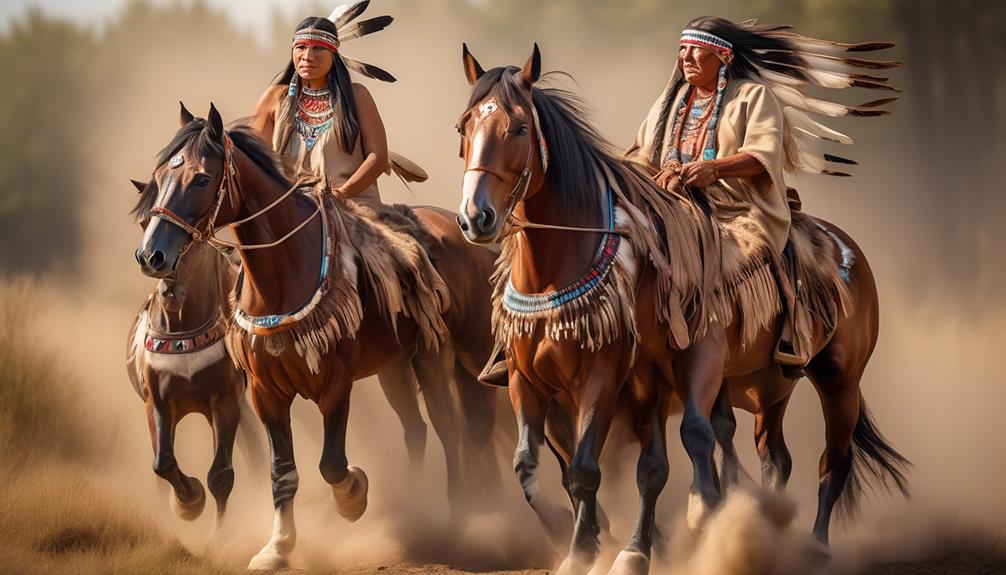
Having explored the influence of Europeans on Native American language and communication, it's important to now consider the impact of this exchange on the adoption of new forms of transportation within Native American communities.
The arrival of Europeans brought about transportation innovations that significantly altered the way Native Americans moved within their territories. Horses, for instance, were introduced to the Americas by the Spanish in the early 16th century. This revolutionized Native American mobility, transforming their hunting practices, trade networks, and warfare strategies. The use of horses allowed for greater distances to be covered in shorter periods, thus increasing the efficiency of travel and communication.
Furthermore, the introduction of wheeled vehicles by the Europeans also had a profound impact on Native American transportation. Wagons and carts facilitated the movement of goods and people, leading to the expansion of trade and the exchange of resources between different Native American groups. This adoption of new transportation methods not only transformed the physical movement of people and goods but also influenced cultural assimilation and the exchange of knowledge between different Native American tribes and European settlers.
As a result of these transportation innovations, Native American communities experienced an evolution in their societal structures and daily lives. The exchange of transportation technology between Europeans and Native Americans facilitated the integration of different cultural practices, ultimately contributing to the development of a more interconnected and dynamic Native American society.
Impact on Political Systems
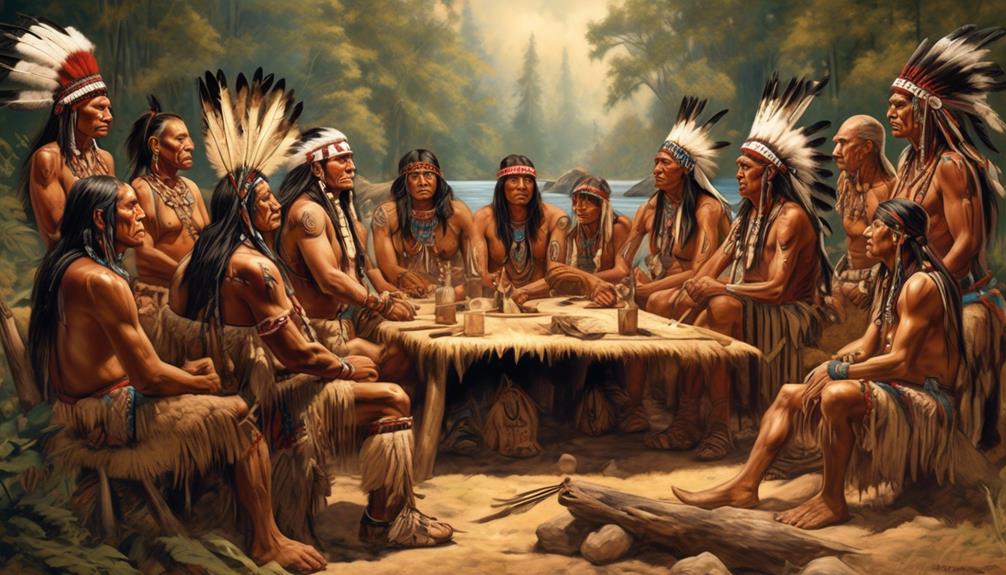
The introduction of European political systems had a significant impact on the governance and decision-making processes of many Native American communities. This impact on governing systems led to a gradual evolution of the political structure within these communities.
- Centralization of Power: European influence often led to the centralization of power within Native American communities. Traditional leadership structures were sometimes reorganized to mirror European models, with power becoming more concentrated in the hands of a single chief or council. This shift altered the decision-making dynamics and distribution of authority within the communities.
- Legal and Judicial Systems: The introduction of European political systems also brought about the establishment of formal legal and judicial systems in many Native American societies. This transformation affected the resolution of disputes, as well as the enforcement of laws and regulations. European legal principles and practices became integrated into the existing governance frameworks, shaping the political and legal landscape of Native American communities.
- Diplomatic Relations: European influence influenced the diplomatic relations of Native American communities. Traditional alliances and trading networks were reconfigured to align with European political interests. This restructuring of diplomatic ties had far-reaching implications for the autonomy and sovereignty of Native American groups, as their political relationships became intertwined with European powers.
Changes in Food Preparation
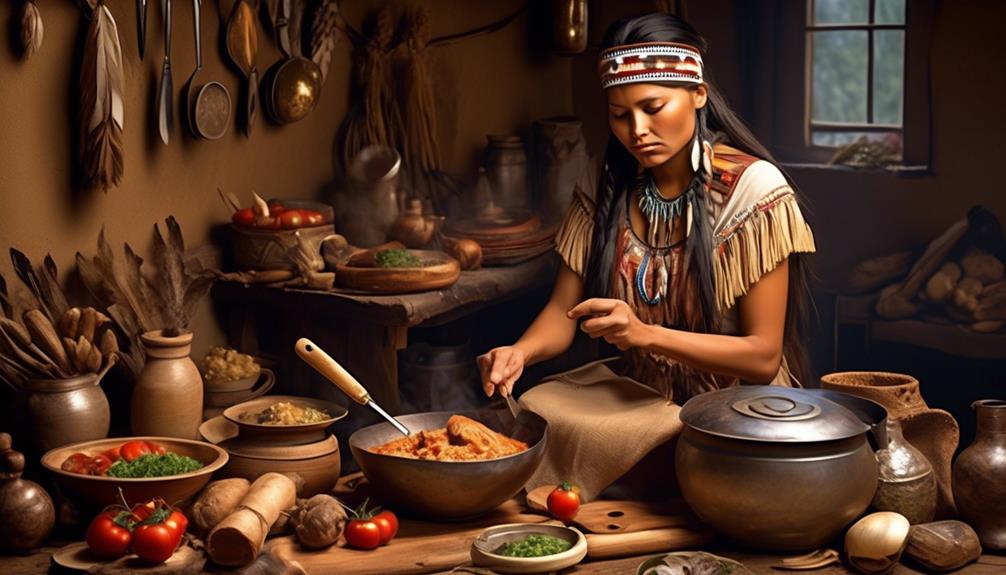
Under European influence, significant alterations in food preparation techniques and practices were observed among Native American communities. European culinary techniques and food customs introduced new ingredients, cooking methods, and utensils that transformed traditional Native American cooking.
The introduction of domesticated animals such as pigs, chickens, and cows by the Europeans significantly impacted the Native American diet. Native Americans began incorporating animal products into their dishes, altering their traditional plant-based cuisine.
The Europeans also introduced new cooking methods such as baking, frying, and stewing, which revolutionized Native American food preparation. The adoption of iron pots and pans from Europe replaced traditional clay pots, allowing for more efficient and diverse cooking techniques. Additionally, the cultivation of European crops like wheat and barley led to the integration of bread and other baked goods into the Native American diet.
Moreover, the exchange of culinary knowledge between Europeans and Native Americans resulted in a fusion of cooking techniques and ingredients. Native Americans adopted European methods while also infusing their traditional dishes with new flavors and ingredients. This cultural exchange enriched Native American cuisine, leading to the development of new and diverse dishes.
Integration of European Fashion
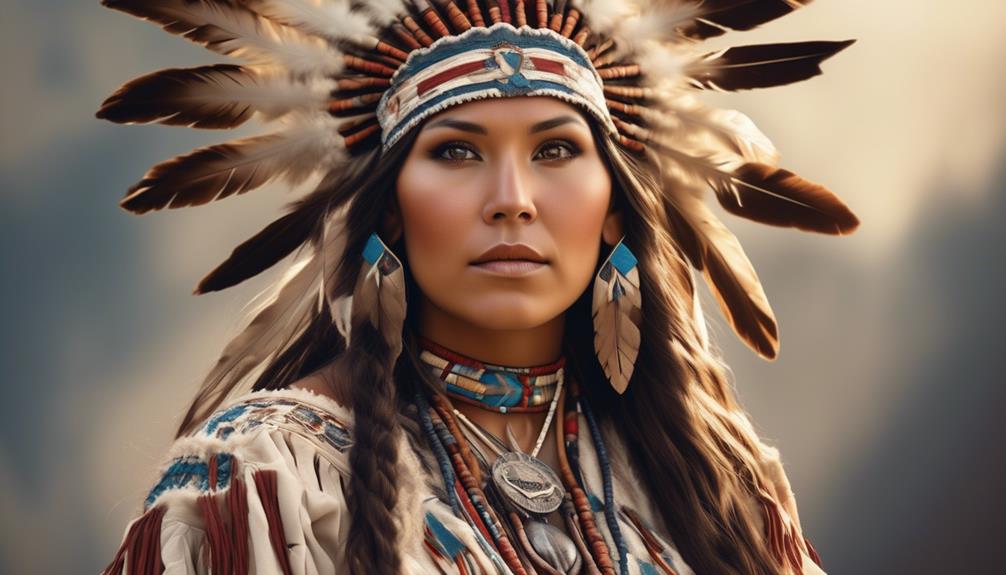
European fashion trends were gradually integrated into the attire of Native American communities, reflecting a cultural exchange influenced by European contact. The integration of European fashion brought about a significant shift in the way Native Americans dressed, marking a pivotal point in their cultural assimilation and fashion evolution. This transformation can be analyzed through various lenses, each shedding light on the complex dynamics at play.
- Cultural Assimilation: The adoption of European fashion elements into Native American clothing symbolized a form of cultural assimilation. It signified the blending of traditions and the acceptance of new influences, showcasing the adaptability and openness of Native American communities.
- Fashion Evolution: The integration of European fashion sparked a noteworthy evolution in the traditional attire of Native Americans. This evolution wasn't merely a surface-level change in clothing but also a representation of the shifting cultural landscape, where the old and the new coalesced to form a unique sartorial identity.
- Socio-Cultural Implications: The integration of European fashion also had socio-cultural implications, as it reflected the interconnectedness of different societies. It represented a visual manifestation of the mingling of European and Native American cultures, highlighting the intricate interplay of traditions and the fluidity of cultural boundaries.
The integration of European fashion into Native American communities stands as a testament to the transformative power of cultural exchange, shaping the way we perceive the intersections of fashion, identity, and history.
Influence on Spiritual Beliefs
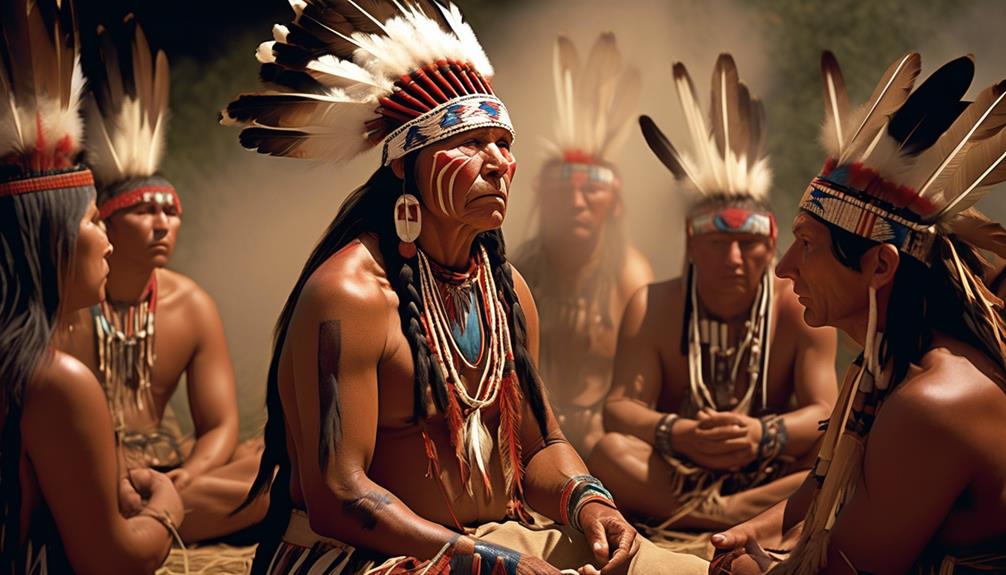
Having encountered Native American spiritual beliefs, Europeans began to exert influence on these practices, leading to significant shifts in the spiritual landscape of Native American communities. This influence on religious practices and spiritual belief adaptation resulted in a complex intertwining of Native American and European spiritual traditions.
| Native American Spiritual Beliefs | European Influence |
|---|---|
| Animism | Introduction of Christianity |
| Shamanism | Imposition of European religious practices |
| Ancestral Worship | Encouragement of conversion to Christianity |
| Connection to Nature | Establishment of mission schools |
| Ceremonial Rituals | Suppression of traditional Native American ceremonies |
The arrival of Europeans brought about the introduction of Christianity, which led to the imposition of European religious practices and the encouragement of conversion to Christianity among Native American communities. This had a profound impact on the traditional spiritual beliefs of Native Americans, resulting in the suppression of traditional ceremonies and the establishment of mission schools aimed at assimilating Native American children into European religious practices.
The adaptation of Native American spiritual beliefs was a complex process, influenced by the imposition of European religious practices and the introduction of Christianity. This interaction between European and Native American spiritual beliefs continues to shape the spiritual landscape of Native American communities, highlighting the enduring impact of European influence on Native American spiritual beliefs.
Frequently Asked Questions
How Did the Exchange of Agricultural Practices Impact the Dietary Habits of Native American Communities?
The exchange of agricultural practices significantly impacted the dietary habits of Native American communities.
Agricultural innovations introduced by Europeans brought new crops and farming techniques that transformed the traditional dietary practices of Native Americans. These changes led to a diversification of food sources and increased overall food production.
As a result, Native American communities were able to expand their diets and improve their overall nutritional intake, contributing to the positive impact of European influence on their dietary habits.
What New Technologies Were Introduced by Europeans and How Did They Affect the Daily Lives of Native Americans?
Technological advancements brought by Europeans significantly impacted daily life for Native Americans.
New tools like metal knives and guns transformed hunting and warfare.
Additionally, European influence altered artistic traditions, introducing new materials and techniques.
These changes influenced Native American societies, sometimes leading to increased efficiency but also disrupting traditional ways of life.
It's essential to recognize the complexities of these impacts and their long-term effects on indigenous communities.
How Did European Influence Impact the Artistic Traditions of Native American Communities and What Specific Art Forms Were Affected?
European influence drastically transformed the artistic traditions of Native American communities. The influx of new materials, techniques, and styles led to a period of artistic innovation and cultural exchange.
Specific art forms such as pottery, weaving, and painting were deeply impacted, resulting in a fusion of traditional Native American aesthetics with European artistic elements.
This exchange not only enriched the artistic landscape but also fostered a deeper understanding and appreciation of diverse cultural expressions.
In What Ways Did the Cultural Exchange Between Europeans and Native Americans Lead to Changes in Social Structures Within Native American Societies?
The cultural exchange between Europeans and Native Americans led to significant changes in social organization and trade networks.
New trade relationships and the introduction of European goods impacted the traditional economic and social structures of many Native American societies.
This exchange often reshaped power dynamics and led to the reconfiguration of trade networks, altering the distribution of resources and influencing the social hierarchies within these communities.
How Did the Adoption of New Crops From Europe Impact the Traditional Food Preparation Methods of Native American Communities?
When European crops were adopted, traditional recipes and food preparation methods in Native American communities underwent significant changes. The introduction of new crops, such as wheat and barley, impacted dietary choices and culinary techniques.
This agricultural exchange also influenced technological advancements and artistic traditions. The adoption of European crops had a profound impact on social structures within Native American societies, leading to a transformation in food production and consumption patterns.
Conclusion
In conclusion, the positive impacts of European influence on Native American communities are evident in several areas.
Firstly, there was an exchange of agricultural practices, with Europeans introducing new crops and farming techniques to Native Americans. This led to increased food production and improved diets for these communities.
Secondly, the introduction of new technologies by Europeans greatly enhanced the daily lives of Native Americans. This included the use of metal tools, firearms, and improved transportation methods, which made hunting, farming, and trading more efficient.
Another significant impact was on artistic traditions. European art styles and techniques influenced Native American artwork, resulting in the development of unique and hybrid artistic expressions.
Cultural exchange between Europeans and Native Americans also occurred, leading to the blending of traditions and the creation of new cultural practices and customs.
Furthermore, European influence brought changes in social structures within Native American communities. The introduction of trade networks and new economic systems led to the formation of new social classes and roles within these societies.
The political systems of Native American communities were also impacted by European influence. Europeans introduced the concept of centralized governance and diplomatic relations, which influenced Native American political structures and alliances.
Changes in food preparation were also observed as Europeans introduced new cooking methods and ingredients to Native American communities. This resulted in the fusion of culinary traditions and the creation of new dishes.
European fashion and clothing styles were integrated into Native American communities, leading to the adoption of new clothing designs and materials.
Finally, European influence had an impact on spiritual beliefs. Native American communities incorporated aspects of Christianity and other European religions into their own spiritual practices, resulting in the development of syncretic belief systems.
Overall, these impacts have contributed to the rich and diverse cultural tapestry of Native American societies, showcasing the resilience and adaptability of indigenous communities in the face of change.
Nayeli is our dedicated Editor in Chief, bringing her passion for words and keen editorial eye to every piece of content we produce. With years of experience in the field, she ensures that every article and publication meets the highest standards of quality and clarity. Nayeli’s commitment to storytelling and her deep understanding of our mission make her an invaluable leader in our team.
